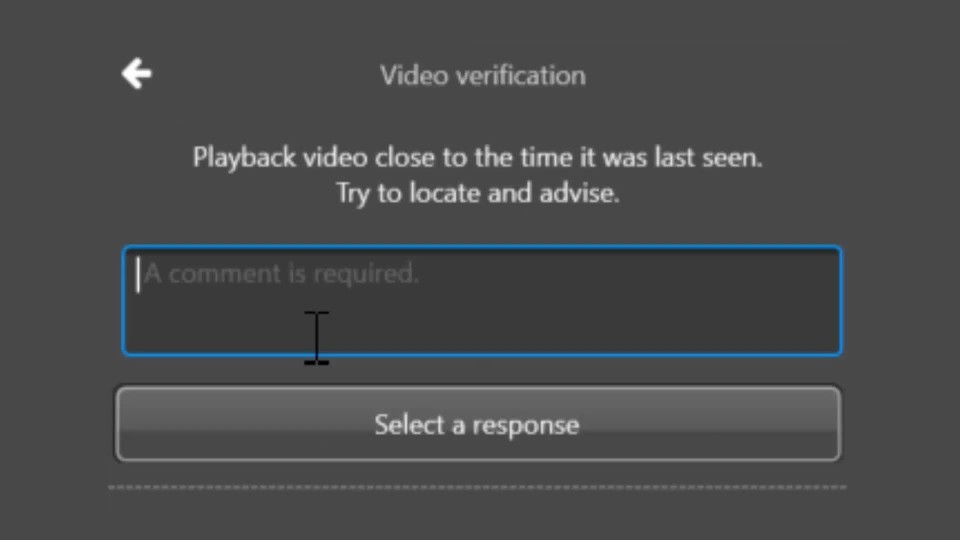
Sipelia
Combine automation and communications. Trigger incidents for incoming calls, connect operators and issue public address messages as part of procedures.
Between smarter sensors, the growing number of devices, and the multiplication of systems, it’s easy to get overwhelmed with data. All of this noise makes it difficult to identify the true threats hiding among the hundreds of events. The danger is finding yourself reacting to incidents only after they’ve escalated.
Genetec Mission Control™ is a decision management system that helps you understand unfolding events and quickly identify the best course of action. It simplifies the response coordination between stakeholders, speeding up incident resolution. Stop reacting and start taking control.

"Our staff and external partners work hard to create an excellent environment for our tenants and technology is the enabler for that. We’re constantly finding new ways the Mission Control platform can support them in working smarter and more productively."
Andrew Forbes-Jones
Facilities Manager
Westminster PV






Focus on what really matters
Mission Control separates incidents that need your attention from minor notifications. It analyzes events from your entire system. It detects patterns that signal real threats and automates routine tasks. When an emergency occurs, it guides your team to respond quickly and confidently. This means fewer disruptions to your operations and a faster return to normal.
Mission Control connects to your sensors and systems through our unified platform, Genetec™ Security Center.
Qualify events based on patterns that point to problems. Stop spending time on false positives and focus on meaningful incidents.
Not all incidents need immediate action. Mission Control dispatches routine maintenance tasks without distracting your operators.
When crisis strikes, every second counts. Guide your team through each step of your playbook to reach a rapid and effective resolution.
Improve future response with hard data on your team's performance. Audit compliance to procedures and regulations, and ensure you do better every time.

With an intuitive drag-and-drop interface, there’s no need to get a developer involved every time you want to create a trigger, automate tasks, or define standard operating procedures.

Go beyond traditional security sensors with an ecosystem of over 900 integrations that includes building management, public address, automated drone systems, and more.

Some incidents can’t be solved alone. Mission Control encourages collaboration within and outside your organization with role-based assignments.

Mission Control provides the tools to manage non-security incidents. From maintenance to building management, it will guide your team to quickly resolve any issue.

Combine automation and communications. Trigger incidents for incoming calls, connect operators and issue public address messages as part of procedures.

Reduce alarm fatigue. Verify alarms triggered by your intrusion detection system and combine intrusion sensors with other data to reduce false positives.

Go beyond security. Detected a gas leak? Mission Control can automatically trigger a public address message and dispatch guards to evacuate the area. Meanwhile, you can coordinate with local authorities.





Keep auditors happy and your business going
Don’t let paperwork slow you down! Mission Control guides your operators through security and safety incidents as well as operational tasks. It makes sure that your team is operating within regulatory boundaries set by regulators using interactive SOPs designed with compliance in mind.
Learn more about the Genetec solution for energy and utilities
A safe learning environment for students and staff
From K-12 to university, a safe learning environment is essential to ensure students reach their full potential. Mission Control helps you realize this goal. It prioritizes incidents based on urgency, so calls from emergency phones reach the top of the priority list. It guides operators through each response step and records their actions. It also automates system reaction in real-time, to ensure a swift response.
Respond effectively through collaboration
Protecting communities can’t be done alone. It requires a coordinated effort by local stakeholders. Mission Control enhances collaboration between law enforcement, fire, EMS, and other partners. It dispatches a response to the right resource without delay. It tracks progress and escalates unaddressed situations, and it provides a clear picture of the situation to everyone involved at every step.
Protecting the backbone of business
The world relies on data. Keeping data centers secure requires a multitude of technologies to detect threats without delay. Mission Control makes sense of incoming events across your security and business systems. You proactively respond to signs of trouble and dispatch incidents to staff, capturing data every step of the way.
Don’t let false alarms take you off course
Airports are data-rich environments. This creates a high number of false alarms that take away operator attention. Mission Control triages incidents requiring immediate attention from background noise. It differentiates mundane events such as a door accidentally forced open from actual threats like attempted break-ins into secure areas.
Discover our airport portfolio to keep operations running smoothly
Your security system gathers valuable data around the clock. Our operations and data solutions help you organize data into insights, and turn insights into actionable intelligence.